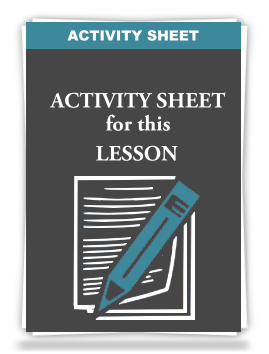- Home
- How I Help
- Selling to Gender Specific Needs [ARTICLE]
Selling to Gender Specific Needs!
Topically, this is a powerful insight to effective strategic and tactical engagement of your marketplace for better engagement and selling effectiveness – this is a market reality and this is not selling gender bias.
Sales professionals have known for decades that the buying styles of men and women have some similarities and some vast differences. The advertising world has studied, tested, conducted focus groups, ran split campaigns, ads, pricing, colors, sizes, names, smells, etc., all in an attempt to determine what works best for men and women. While some very definitive answers have been determined, there are still a lot of unknowns and even a larger number of similarities among men and women when in a buying mode.
For your marketplace and deliverables, recognize, that adjusting how one engages a male versus a female prospect or customer may need to be different in respect to their buying behaviors, not in level of professionalism afforded to each.
This understanding will greatly influence how you navigate through the Five Psychological Steps to the Selling Process. The gender of the prospect/customer may influence how the sales professional engages the other persona and what their need level drivers may in fact be:
- Engage in ATTENTION getting conversations, as a component of Step One of the Five Steps to Selling. Women tend to be (there are exceptions) more relational based and want to feel comfortable with the sales professional before revealing personal information, step two of the selling process – INQUIRY/INTEREST. Whereas men tend to be more aggressive and bottom line oriented and will answer or respond quicker to initial questions. Men may also be less engaging in step one, whereas as a woman may be more engaging; And recognize conversational signals as in some situations the gender behavior may actually be reversed.
- Engage in ATTENTION getting conversations, as a component of Step One of the Five Steps to Selling. Women tend to be (there are exceptions) more relational based and want to feel comfortable with the sales professional before revealing personal information, step two of the selling process – INQUIRY/INTEREST. Whereas men tend to be more aggressive and bottom line oriented and will answer or respond quicker to initial questions. Men may also be less engaging in step one, whereas as a woman may be more engaging; And recognize conversational signals as in some situations the gender behavior may actually be reversed.
As an example, in the financial services industry, in making decisions around financial matters, men may more often be more oriented towards power, control, authority orientations in their interactions, women tend to be more security, safety, long term focused in their orientation.
In working with the United States National Guard and top drivers to why men versus women join the military there are five distinct differences that drive each to their decision, while similar decision drivers are among each’s top ten list, the first five are radically different. Knowing this allows you to recalibrate your approach as a selling professional. - Men in the PRESENTATION step typically want bottom line results that the product/service will generate. They tend to want to focus on power, control, authority, short term-ness, etc., in the features and benefits that are of interest to them. Whereas women may also want these tangibles, they may also be looking for in the PRESENTATION step how the product/service correlates to their bigger picture responsibilities in life and how this may be perceived by others.
It is important for sales professionals to recognize that differing product/services have a wide rage of Features/Facts-Benefits. These Features/Facts-Benefit statements may change given a situation or time when there may be more effective Features/Facts to share with a female buyer as opposed to what might be more influential with a male buyer.
This understanding also will guide you to the level of word-smithing you engage in, the examples, references, testimonials, communication touch-point differences, collateral materials, follow-up engagements, and how you over-all engage one gender versus another. Study gender specific deliverables, businesses, associations, and affinity groups traditionally targeted towards one gender versus another to benchmark what you do and learn best practices from others that you can incorporate into our style.
Remember, people buy for differing reasons, we have identified in this book several of the influencers to those decisions and another of the variances that influence how people decide is also their gender - like it or not!





